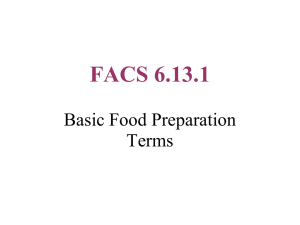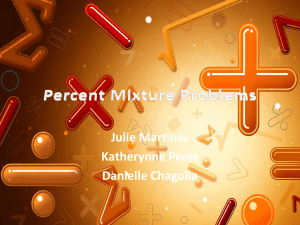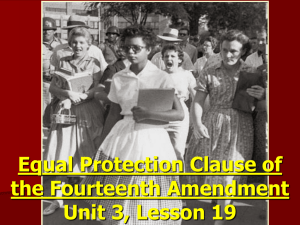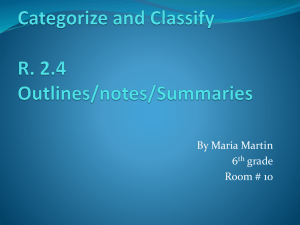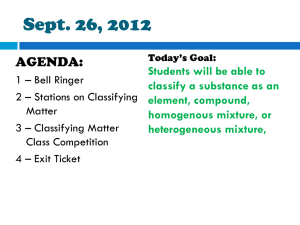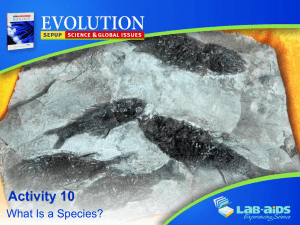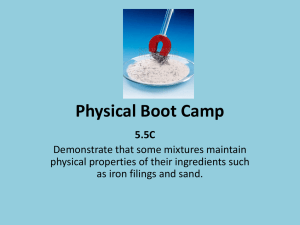Chemistry Unit 02 Lesson 02
advertisement
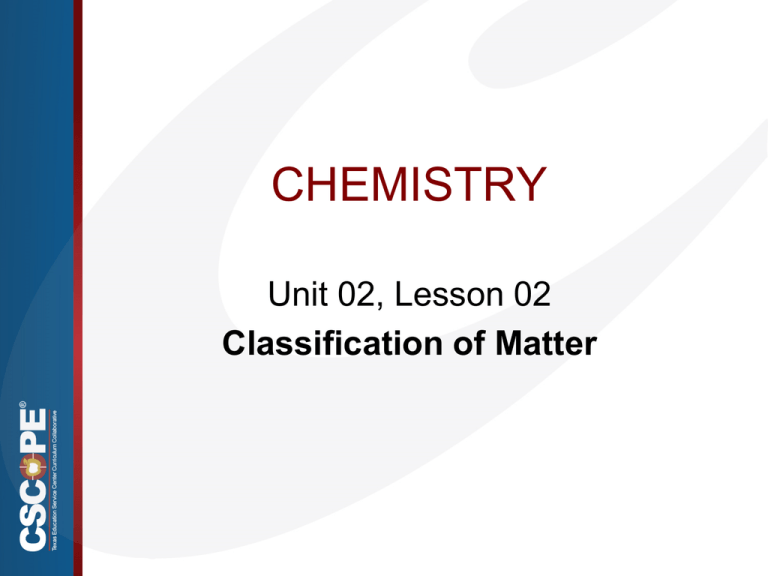
CHEMISTRY Unit 02, Lesson 02 Classification of Matter Fractional Distillation Images source: http://en.wikipedia.org/wiki/Fractional_distillation Separation Stations Graphic Organizer Construction • Construct a 3 tab graphic organizer “Elements, Compounds, and Mixtures” – Materials: • • • • 1 sheet paper scissors pen colored pencils/crayons • glue/tape – Instructions: • Fold paper lengthwise. • Cut along the fold lines from the edge to the centerline. • Color the headings ‘Elements’, ‘Compounds’, and ‘Mixtures’ different colors. • Use this graphic organizer to list examples of each type of particle. • Adhere graphic organizer in your science notebook. Filtration Separation Technique Filtration Property Used for Separation Solubility Example Separate sand from water Thin Layer Chromatography (TLC) Chromatogram of 10 essential oils colored with vanillin reagent. Separation Technique Chromatography Property Used for Separation Size, Polarity, pH Example Separate component dyes of black ink Sieving Separation Technique Sieving Property Used for Separation Particle Size Example Panning for gold (Au) Magnetic Attraction Separation Technique Magnetic Attraction Property Used for Separation Magnetism Example Separate ferrous from non-ferrous materials Decantation Separation Technique Decanting Property Used for Separation Density or Solubility Example Pour off water from sediment mixture Evaporation Separation Technique Evaporating Property Used for Separation Solubility and Boiling Point Example Driving off water leaving salt behind TASK: For the scenarios provided, use the decision tree below, and your knowledge of matter, to classify the particles (element, compound, or mixture) described. An unknown, clear liquid is given to you in a beaker. You transfer the liquid from the beaker to a clean, empty test-tube and begin to heat it. After a while, you see vapors (which on further analysis, you discover are vapors of water) rising from the test-tube, and pretty soon, all that's left are a few crystals of salt stuck to the edges! How would you classify the unknown liquid? MIXTURE You have won the world's biggest lottery, for which you are given a huge block of pure, metallic gold. How would you classify this substance? ELEMENT A dish is given to you, which contains a blackishyellow powder. When you move a magnet over it, you are amazed to see black particles (which you find out are iron) fly upwards and get stuck to the magnet. All that's left in the dish is a yellow powder, which you discover to be sulfur. How would you classify the initial blackishyellow powder? MIXTURE A substance is analyzed in a laboratory, and when viewed under an electron microscope, it is revealed that it contains only one kind of atom. How would you classify the substance? ELEMENT This gas is essential for us, and all other aerobic organisms, to survive. We inhale it along with the air we breathe (of which it forms approximately 21%), and it then helps in the oxidation of glucose in our bodies. How would you classify the substance? ELEMENT Water is what all life in the world depends on. How would you classify water? COMPOUND A magnesium ribbon is burnt in the air to form the grayish oxide of magnesium magnesium oxide (MgO). How would you classify this oxide? COMPOUND How would you classify the air we breathe? MIXTURE These are given 'symbols' like 'Ar', 'Zn', 'W‘, and 'Xe' and are arranged in a table called the periodic table. How would you classify these substances? ELEMENTS An unknown, silvery powder has a constant melting point and does not chemically or physically separate into other substances. How would you classify the unknown substance? ELEMENT Separating an Unknown Mixture 1. Examine the mixture. Discuss, in your group, how you are going to separate the mixture. Think about the properties and techniques you will use and the order of the steps that you will follow. 2. After you agree on a plan, write this plan in your science notebook. 3. Review the plan with your teacher before you begin to separate the mixture. 4. Using the techniques you have selected, separate the mixture. Make observations and record them in your science notebook. Separating Mixtures 1. Were you successful in separating the components of the mixture? Describe your results. 2. Was the order you used to separate the mixture important? Why? 3. What was the most challenging part about separating the mixture? 4. What properties did you use to separate the mixture? Write a summary report that includes the steps used to successfully separate the unknown mixture into its components. Include a table that: • classifies each component separated as a pure substance (element or compound) or mixture; • identifies the property and technique used to separate the component from the mixture; and • indicates whether the property used is intensive or extensive.

